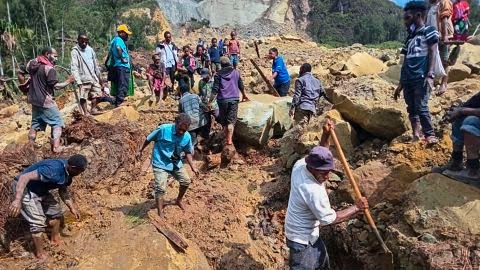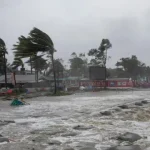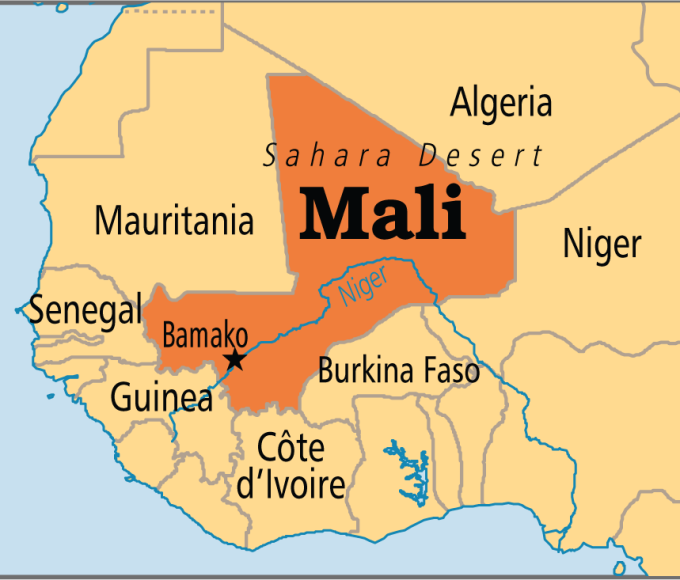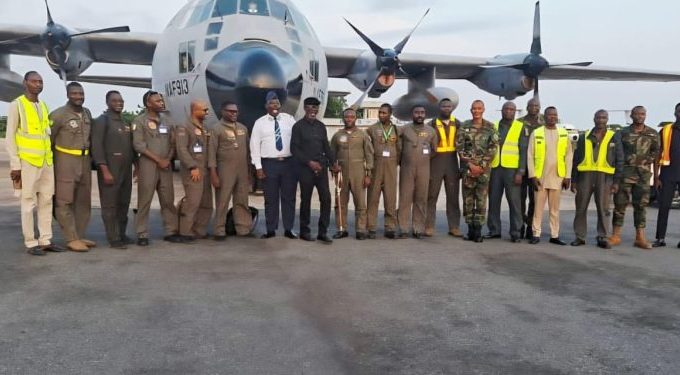
Papua New Guinea: Over 2,000 Possibly Buried Alive In Massive Landslide

A catastrophic landslide in northern Papua New Guinea has potentially buried more than 2,000 people alive in the remote Enga province, according to the National Disaster Centre. The disaster, which struck the village of Yambali early Friday, has left survivors digging through the debris with their hands and essential tools.
Landslides occur when masses of rock, earth, or debris move down a slope due to gravity. Natural factors like heavy rain, earthquakes, volcanic activity, and human activities like deforestation and construction can trigger them.
Initial reports suggested around 100 deaths, which were later revised by the UN to 670. However, recent estimates from Lusete Laso Mana, Acting Director of the National Disaster Centre, indicate a significantly higher death toll, as the landslide caused extensive destruction to homes, food gardens, and the local economy.
Eyewitnesses described the landslide as striking “like an exploding bomb,” sweeping away entire households. Reuters quoted Evit Kambu, a resident, as saying:
I have 18 of my family members buried under the debris and soil that I am standing on and a lot more family members in the village I cannot count.
Efforts to rescue survivors have been hampered by unstable ground and blocked access routes. Despite the arrival of some heavy machinery, most rescue operations rely on shovels, sticks, and bare hands.
People have been digging since day one but can’t locate bodies as huge rocks cover them. Only machines will do, said community leader Miok Michael.
The United Nations and various humanitarian organisations, including CARE International and World Vision, are coordinating relief efforts. However, the instability of the landslide area and the remote location of the disaster site make it difficult.
Local media reported some miraculous rescues, including a couple pulled alive from under the rocks after their home was only partially hit. However, with many areas still inaccessible, the full extent of the tragedy remains unclear.
About The Author
Related Articles
Gold Sector Revival Expected to Drive Mali Growth Next Year
The International Monetary Fund has projected that Mali’s economy will return to...
ByWest Africa WeeklyDecember 22, 2025Burkina Faso, Mali and Niger Formalise New Regional Security Alliance
Burkina Faso, Mali and Niger have formally launched a joint regional military...
ByWest Africa WeeklyDecember 22, 2025Ghana Receives Nigerian Military Aircraft After Burkina Faso Release
A Nigerian Air Force aircraft that had been held by Burkina Faso...
ByWest Africa WeeklyDecember 22, 2025Burned Files, Altered Laws: The Growing Pattern of Disappearing Records Under Tinubu
A fire outbreak at the headquarters of the Federal Inland Revenue Service...
ByWest Africa WeeklyDecember 21, 2025











